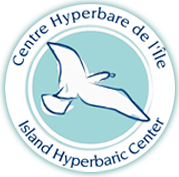Effects of Hyperbaric Oxygen Therapy (HBOT) on Neurogenesis in Stroke Recovery
Effects of Hyperbaric Oxygen Therapy (HBOT) on Neurogenesis in Stroke Recovery
Hyperbaric oxygen therapy (HBOT) has shown promising effects on neurogenesis, which is crucial for recovery following a stroke. Here are the key mechanisms and clinical implications of HBOT in promoting neurogenesis during stroke recovery:
1. Enhanced Oxygen Delivery
– Increased Oxygenation: HBOT increases the amount of oxygen dissolved in the blood, which enhances oxygen delivery to ischemic brain tissues. This improved oxygenation supports the survival and function of neural progenitor cells, which are essential for neurogenesis.
2. Reduction of Inflammation
– Anti-inflammatory Effects: HBOT reduces neuroinflammation by decreasing pro-inflammatory cytokines and inhibiting the activation of microglial cells. Reduced inflammation creates a more favorable environment for neurogenesis and neuronal repair.
3. Promotion of Neural Stem Cell Proliferation
– Stem Cell Activation: HBOT has been shown to promote the activation and proliferation of neural stem cells in the subventricular zone (SVZ) and the hippocampus. These regions are critical for generating new neurons that can replace those lost due to stroke.
– BDNF Upregulation: HBOT increases the levels of brain-derived neurotrophic factor (BDNF), a key protein involved in the proliferation and differentiation of neural stem cells.
4. Enhanced Angiogenesis
– VEGF Upregulation: HBOT upregulates vascular endothelial growth factor (VEGF), promoting angiogenesis and improving blood supply to the brain. Enhanced vascularization supports the delivery of oxygen and nutrients necessary for neurogenesis and neuronal repair.
5. Improvement of Blood-Brain Barrier (BBB) Integrity
– BBB Protection: HBOT helps maintain the integrity of the blood-brain barrier, preventing the infiltration of peripheral immune cells and inflammatory mediators that can damage neural tissue and impede neurogenesis.
6. Modulation of Oxidative Stress
– Antioxidant Enzyme Activation: HBOT enhances the activity of antioxidant enzymes such as (SOD) and catalase, which neutralize reactive oxygen species (ROS) and reduce oxidative stress. Lower oxidative stress levels protect neural progenitor cells and support their proliferation and differentiation.
Clinical Implications
– Functional Recovery: By promoting neurogenesis, HBOT can enhance functional recovery in stroke patients. This includes improvements in motor skills, cognitive functions, and overall quality of life.
– Long-term Benefits: HBOT’s effects on neurogenesis and neuroprotection may contribute to long-term recovery and reduce the risk of secondary complications associated with stroke.
– Adjunctive Therapy: HBOT can be used as an adjunctive therapy alongside conventional stroke treatments, potentially enhancing their efficacy and accelerating recovery.
Conclusion
HBOT positively affects neurogenesis in stroke recovery through mechanisms such as enhanced oxygen delivery, reduction of inflammation, promotion of neural stem cell proliferation, enhanced angiogenesis, improvement of BBB integrity, and modulation of oxidative stress. These effects collectively support the repair and regeneration of neural tissues, making HBOT a valuable therapeutic option for improving outcomes in stroke patients. Further research is needed to optimize treatment protocols and fully understand the long-term benefits of HBOT in stroke recovery.
